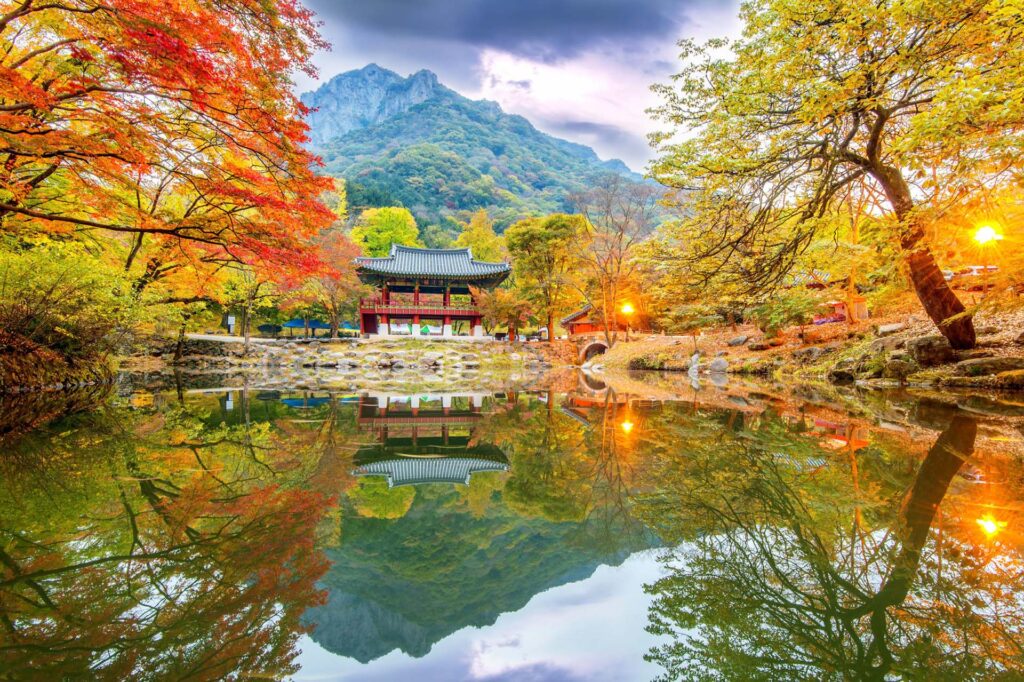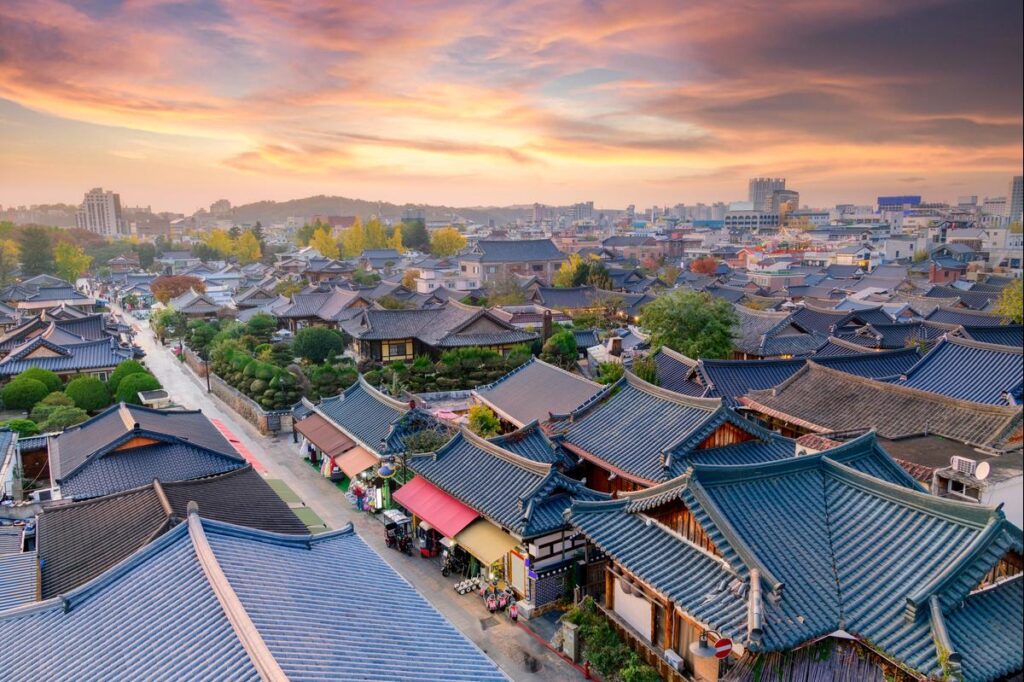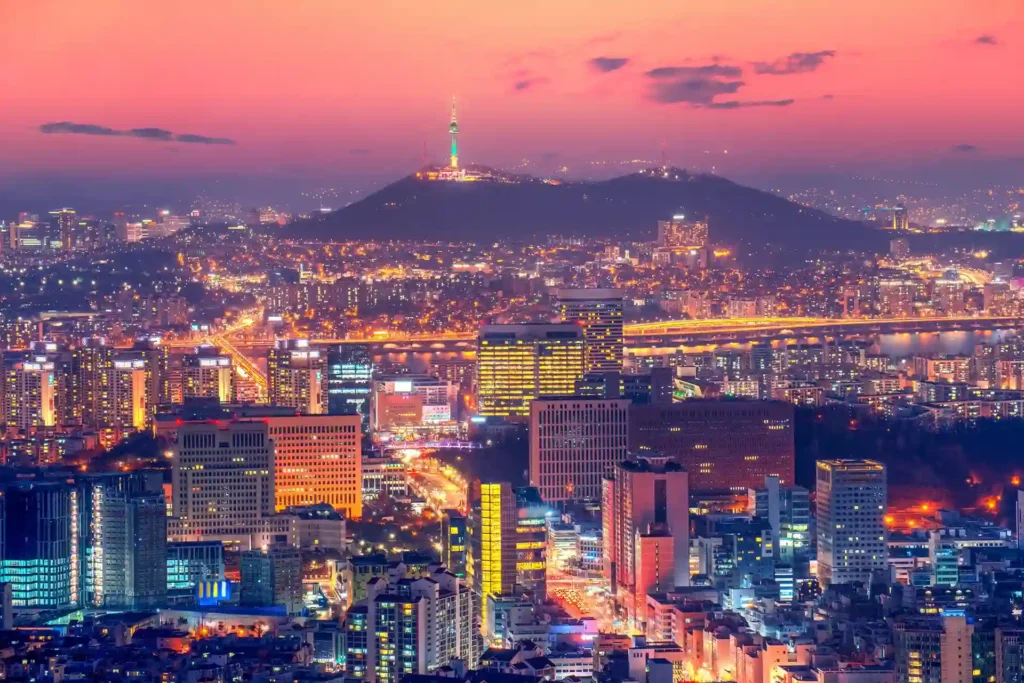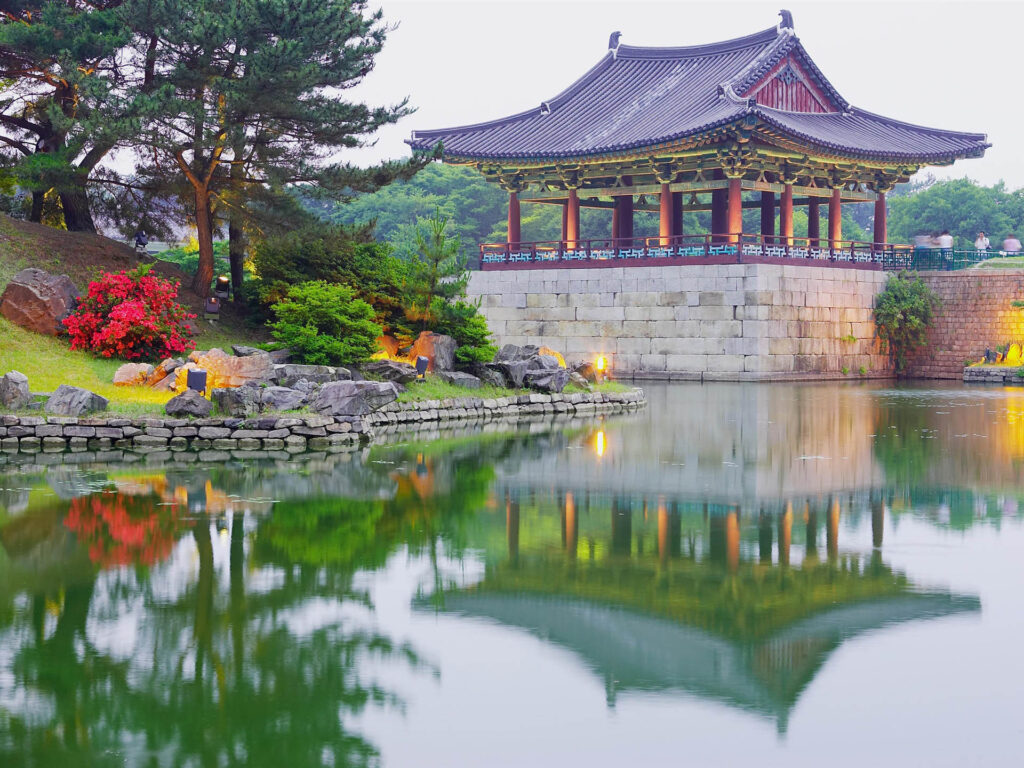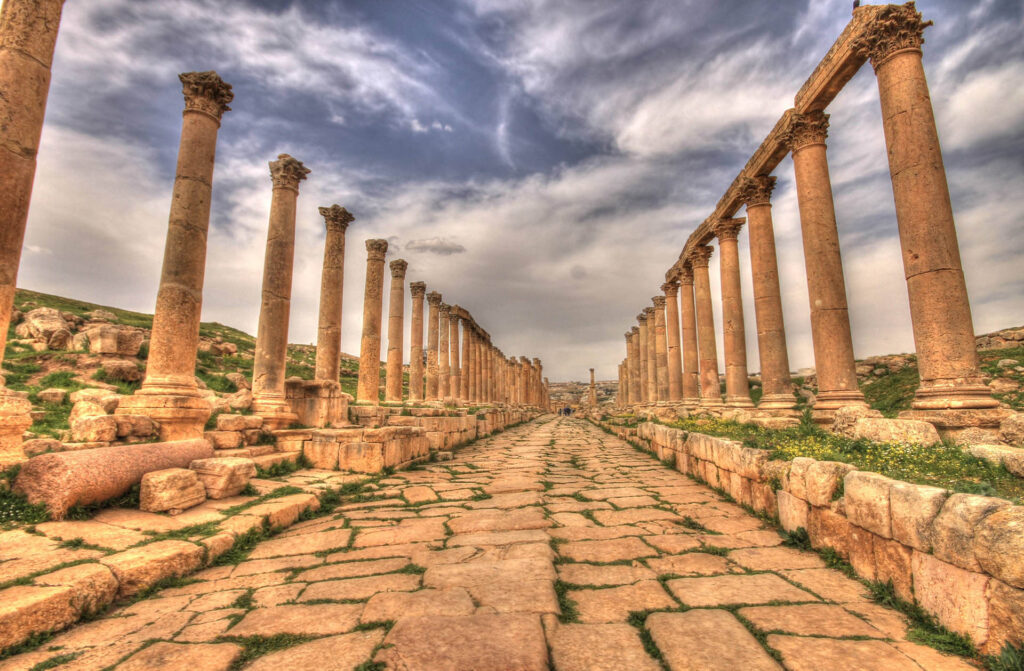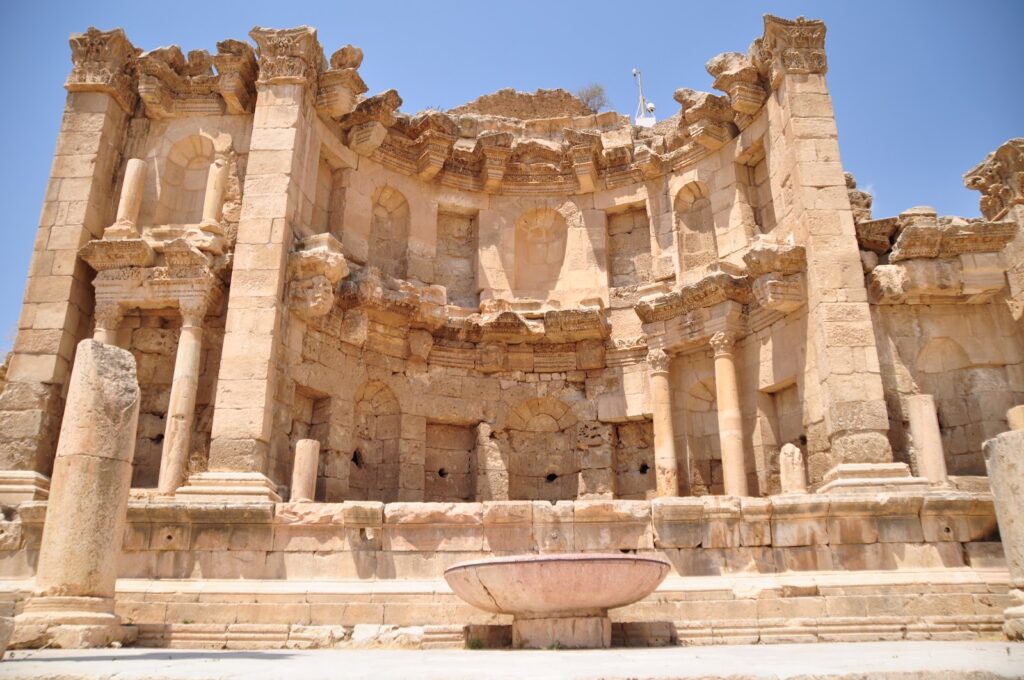Table of Contents
ToggleIntroduction to Bokchon Hanok Village
Nestled in the heart of Seoul, Bokchon Hanok Village stands as a living testament to South Korea’s rich cultural heritage. This historic neighborhood is renowned for its well-preserved traditional hanok houses, tranquil alleys, and immersive cultural experiences. In this comprehensive guide, we delve into the history, architecture, attractions, and visitor experiences of Bokchon Hanok Village, offering insights for travelers and culture enthusiasts alike.
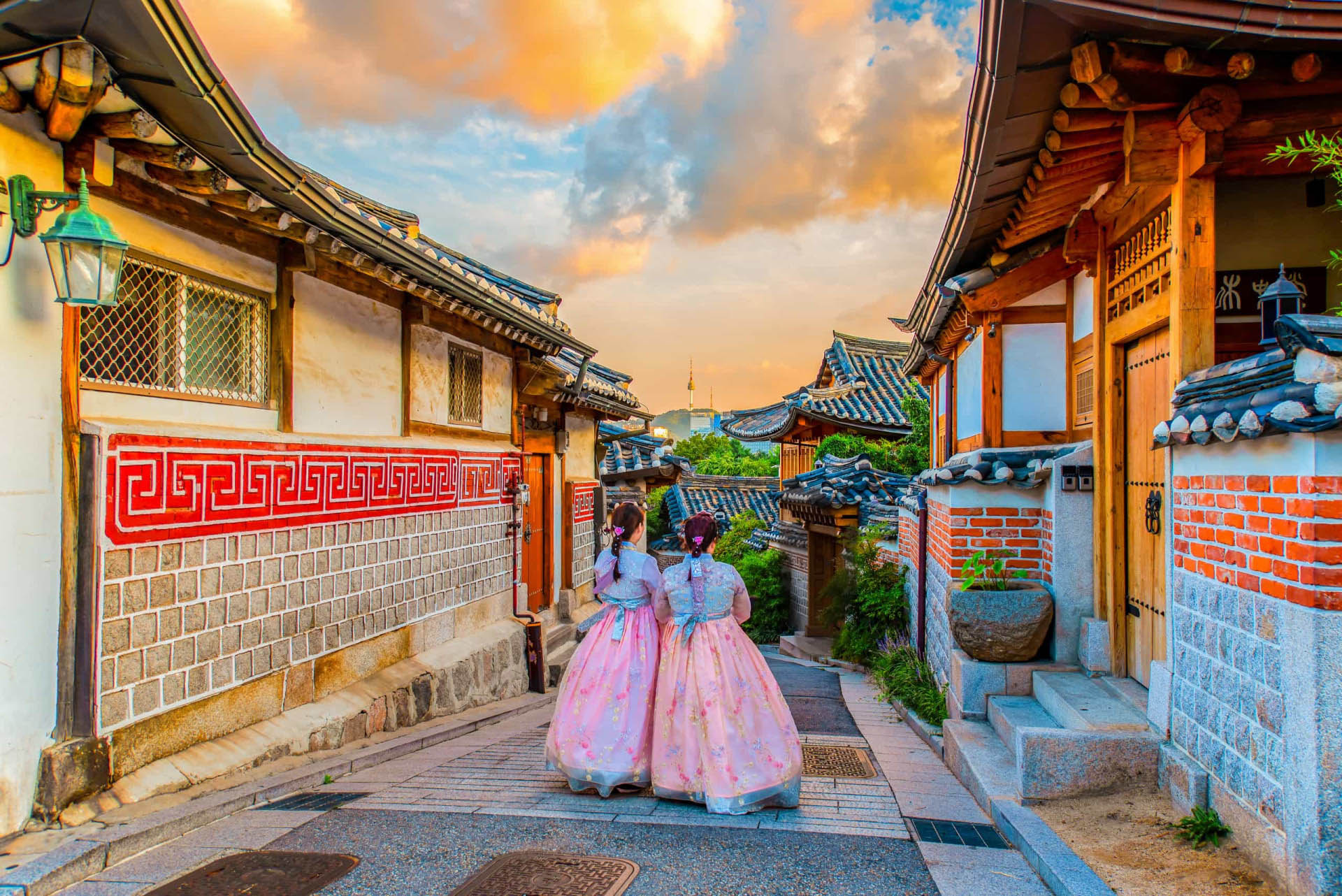
History and Evolution
Origins of Bokchon Hanok Village
Historical Context
Bokchon Hanok Village dates back to the Joseon Dynasty (1392-1910), a period marked by Confucianism and traditional Korean architecture. The village originally housed noble families, scholars, and high-ranking officials, reflecting its significance as a center of culture and learning.
Development Over Centuries
Architectural Style and Design
Hanok houses are characterized by their unique architectural features, which emphasize harmony with nature and the surrounding landscape. Key elements include:
- Wooden Structure: Hanok houses are typically built with wooden frames and beams, using traditional joinery techniques that do not require nails.
- On-dol Heating System: Floors are heated using an underfloor heating system known as on-dol, which circulates warm air from a wood-burning stove or heated stones.
- Coursed Bricks and Tiles: Exterior walls are often made of earth-toned bricks and tiled roofs, blending seamlessly with the natural environment.

Exploring Bokchon Hanok Village
Architectural Highlights
Key Hanok Houses
Bokchon Hanok Village is home to several well-preserved hanok houses, each offering a glimpse into traditional Korean lifestyle and architecture.
- Gahoe Hanok Village: This cultural complex features restored hanok houses dating back to the Joseon Dynasty, showcasing traditional crafts and cultural activities.
- Bukchon Traditional Culture Center: A hub for cultural education and workshops, offering visitors insights into hanok architecture and traditional Korean arts.
Cultural Attractions
Museums and Cultural Centers
Bokchon Hanok Village boasts a variety of museums and cultural centers that highlight the area’s historical and artistic significance.
- Han Sangsu Embroidery Museum: Exhibits traditional Korean embroidery techniques and artwork, housed in a beautifully restored hanok.
- Bukchon Hanok Museum: Offers interactive exhibits on hanok architecture, interior design, and the evolution of Korean housing.
Hanok Stay Experience
Overnight Accommodations
Visitors have the unique opportunity to experience traditional Korean hospitality by staying overnight in a hanok house.
- Hanok Stay Programs: Several hanok houses offer overnight accommodations, allowing guests to immerse themselves in traditional Korean lifestyle and culture.
- Amenities and Services: Hanok stays typically include traditional Korean meals, cultural activities such as tea ceremonies and calligraphy lessons, and the chance to wear hanbok (traditional Korean clothing).

Cultural Heritage and Traditions
Traditional Practices
Daily Life in Hanok Houses
Traditional hanok houses reflect the cultural values and customs of Korean society, emphasizing harmony with nature and respect for ancestors.
- Feng Shui Principles: Hanok architecture is designed according to feng shui principles, with considerations for auspicious orientation and spatial harmony.
- Seasonal Adaptations: Hanok houses are designed to adapt to Korea’s four distinct seasons, with sliding doors and windows to regulate airflow and temperature.
Festivals and Celebrations
Cultural Events
Throughout the year, Bokchon Hanok Village hosts festivals and cultural events that celebrate Korean traditions and customs.
- Seollal (Lunar New Year): A time for family gatherings and ancestral rituals, featuring traditional games, performances, and food.
- Chuseok (Harvest Festival): Celebrates the autumn harvest with folk music, dance performances, and rituals honoring ancestors.
Art and Handicrafts
Traditional Crafts
Artisans in Bokchon Hanok Village specialize in traditional Korean handicrafts, preserving centuries-old techniques and artistic traditions.
- Hanji (Traditional Korean Paper): Artisans create exquisite hanji crafts, including lamps, fans, and stationery, using paper made from mulberry bark.
- Ceramics and Pottery: Ceramic studios produce pottery using techniques passed down through generations, showcasing unique glazes and designs.

Visitor Experience and Practical Information
Getting to Bokchon Hanok Village
Transportation Options
Bokchon Hanok Village is easily accessible from central Seoul, with convenient transportation options for visitors.
- Subway: Take Line 3 to Anguk Station (Exit 2) or Line 5 to Gyeongbokgung Station (Exit 2), followed by a short walk to the village entrance.
- Bus: Numerous bus routes connect to the village from various parts of Seoul, offering a scenic route through historic neighborhoods.
Admission and Hours
Accessibility and Hours of Operation
Bokchon Hanok Village is open year-round, with free admission to most areas. Some museums and cultural centers may charge a nominal entrance fee.
- Opening Hours: The village is generally open from early morning until late afternoon, with specific hours varying by season and day of the week.
- Guided Tours: Guided tours in English and other languages are available for groups and individuals, providing in-depth insights into the village’s history and cultural significance.
Tips for Visitors
Enhancing Your Experience
To make the most of your visit to Bokchon Hanok Village, consider the following tips:
- Wear Comfortable Shoes: The village features narrow alleys and uneven paths, so comfortable walking shoes are recommended.
- Respect Cultural Norms: As a residential area, visitors are encouraged to maintain a quiet and respectful demeanor, especially near residential hanok houses.
- Photography Etiquette: While photography is permitted in most areas, be mindful of residents’ privacy and refrain from using flash in sensitive areas.
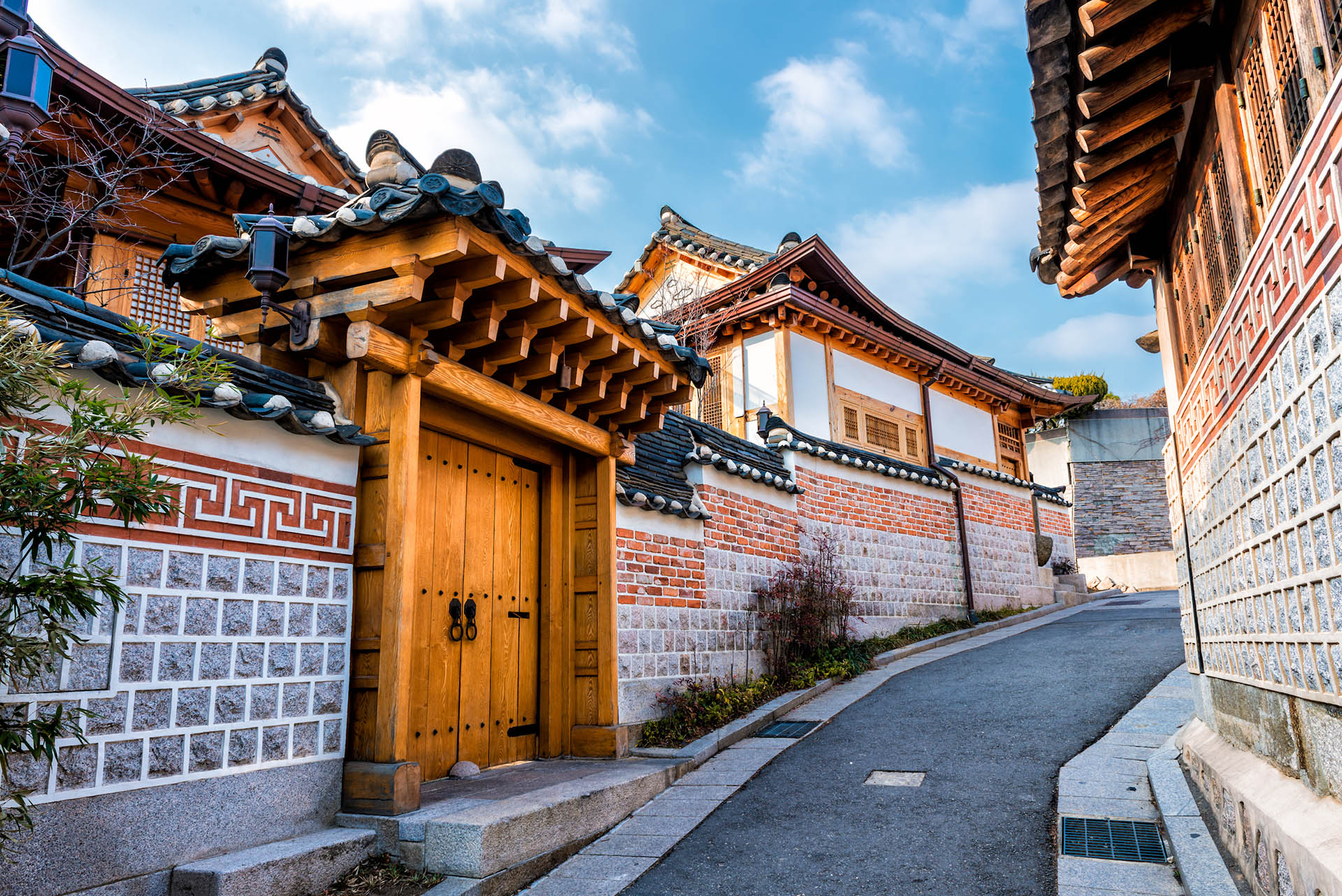
Future Prospects and Preservation Efforts
Sustainability and Conservation
The preservation of Bokchon Hanok Village is a priority for local authorities and cultural organizations, ensuring that its architectural heritage and cultural traditions are safeguarded for future generations.
- Restoration Projects: Ongoing efforts to restore and maintain hanok houses, using traditional building techniques and materials.
- Community Engagement: Engaging local residents in cultural preservation initiatives and promoting sustainable tourism practices.
Educational Initiatives
Bokchon Hanok Village continues to serve as an educational hub for Korean history, architecture, and cultural traditions.
- School Programs: Educational programs for students, offering hands-on experiences in traditional crafts and cultural activities.
- Workshops and Demonstrations: Public workshops and demonstrations on hanok architecture, calligraphy, and traditional music for visitors of all ages.
Conclusion
Bokchon Hanok Village stands as a cherished cultural gem in Seoul, offering a window into Korea’s traditional way of life. From its centuries-old hanok houses and cultural attractions to immersive hanok stay experiences, the village provides a unique blend of history, architecture, and heritage. Whether you’re exploring the tranquil alleys, participating in traditional crafts, or savoring authentic Korean cuisine, Bokchon Hanok Village promises an enriching journey through Korea’s vibrant cultural tapestry. As efforts continue to preserve and promote this historic neighborhood, Bokchon Hanok Village will undoubtedly remain a timeless destination for visitors seeking to connect with Korea’s past and present.

